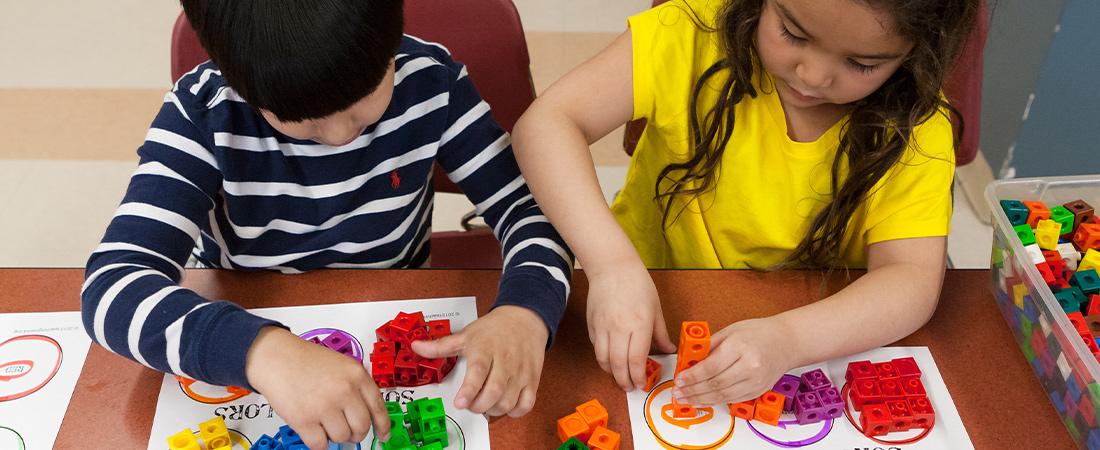New EDC Study to Advance Knowledge of Children’s Math and Spatial Learning

EDC, in partnership with public media producer, GBH, has received a grant from the National Science Foundation (NSF) to develop and study a math curriculum supplement targeted to build the spatial orientation (SO) skills of children and to improve the early math learning of preschoolers living in under-resourced communities.
The new project, “Transforming Preschoolers’ Spatial Orientation: Leveraging New Technologies for Learning in Early Childhood Classrooms and at Home,” meets a critical need. Research shows that SO skills are key to children’s later STEM learning and success in school. Yet few teachers and families know how to support children in developing these skills, and the skills are rarely the focus of curricula in the early years. This is especially true in under-resourced communities.
Principal investigator (PI) Ashley Lewis Presser and co-PI and executive producer Jillian Orr will lead a team—including development partners at GBH, research partners at Digital Promise Global, and evaluation partners at SRI International—in designing the supplement and studying its use with approximately 700–800 preschool children and their families and teachers.
The new project will build on the success of the NSF-funded Early Math with Gracie & Friends™ digital property, which provides activities and apps for preschool children. With rigorous early math learning at the core, the supplement will draw on hands-on activities and books, as well as digital touch-screen tablets with augmented reality technologies, to help caregivers and early childhood educators foster children’s SO learning.
The team will conduct observations, assessments, interviews, and surveys to examine four key aspects of the supplement to determine its potential for widespread use:
1. Ease of use: What features appear to help children easily use the supplement at home and in preschool classrooms?
2. Key instructional aids: What activities and supports from teachers and families appear to help children successfully engage in SO activities?
3. Potential of augmented reality: What aspects of augmented reality show promise to help build children’s understanding of SO ideas and SO skills?
4. Student learning outcomes: When combined with additional SO learning at home, does the supplement increase children’s SO knowledge over time?
“Children who have access to high-quality early math and SO learning opportunities are more likely to succeed in mathematics later on, opening doors for the future,” said Lewis Presser. “We are excited to explore a new way to help families and teachers foster children’s SO and math skills and give them a sound foundation for future STEM learning and academic achievement.”
“In our work, it’s not only the R&D team. We partner and work closely with parents, early childhood educators, advisors, and children to develop activities and technology-based learning experiences that are engaging and impactful for children’s learning,” added Orr. “This approach celebrates the unique perspectives of each partner and makes all the difference in what is developed.”